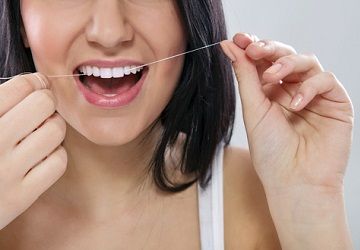How to Get Patients to Floss
New guidance from the National Institute of Health (NIH) may help sway some of your more stubborn, non-flossing patients.

We get it. There have been a news reports circulating that call into question the health benefits of flossing. Your non-flossing patients might even be throwing them in your face when you point out their lack of attention to the spaces between their teeth.
But you can tell at a glance who flosses and who doesn’t. There are the telltale signs of bleeding or swollen gums. It’s hard to argue that flossing doesn’t have obvious benefits. But for your more stubborn patients, here’s some new ammunition for your flossing battle.
The National Institutes of Health (NIH) in its monthly newsletter highlights precisely why patients shouldn’t “toss the floss.” The report, which is written for the layperson, is as good resource to which you can refer patients who aren’t doing their flossing duty.
It highlights some of the fundamentally flawed underpinnings of the existing flossing research, primarily that there have been few “long-term, large-scale, carefully controlled studies of flossing.”
The other major flaw, according to the NIH report, is that all flossing studies have relied on self-reported data. In studies such as these, the NIH says, “people tend to report what they think is the ‘right’ answer when it comes to their health behaviors—whether flossing, exercising, smoking or eating.” As a result, the NIH says, well-controlled studies tend to show flossing benefits, whereas studies outside of the lab tend to be less conclusive about the benefits.
In other words, study participants outside of the lab might not actually be flossing.
Furthermore, the NIH points out that small clinical studies have shown modest flossing benefits. The group says that 12 well-controlled studies revealed that flossing, in combination with tooth-brushing, did a better job reducing gum disease or gingivitis than tooth-brushing alone. Plus, the same studies showed faster reduction of plaque when brushing and flossing were combined.
And if all of that fails to sway your patients toward flossing, perhaps pointing out the unsightly remnants of last night’s dinner that are caught between their front teeth will.